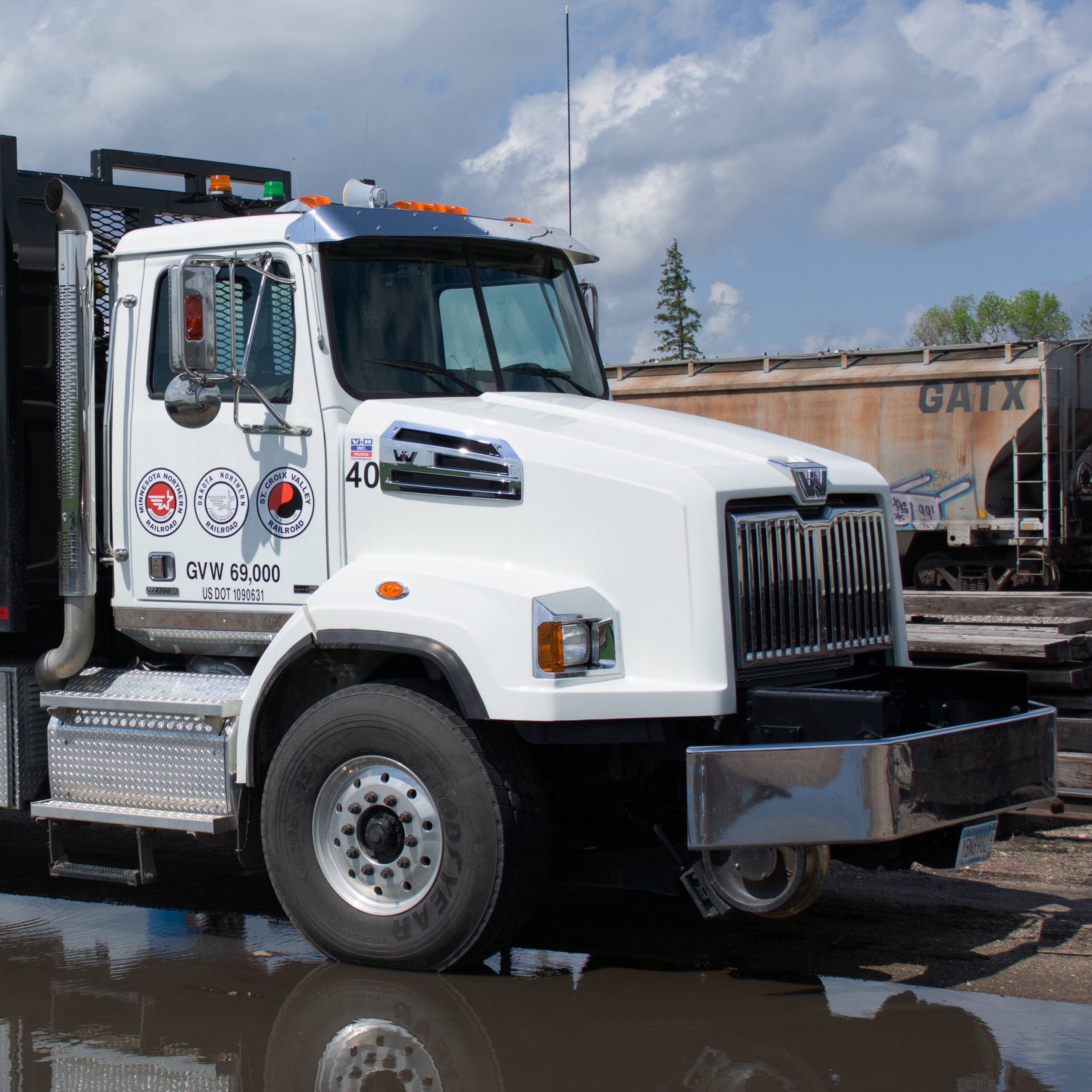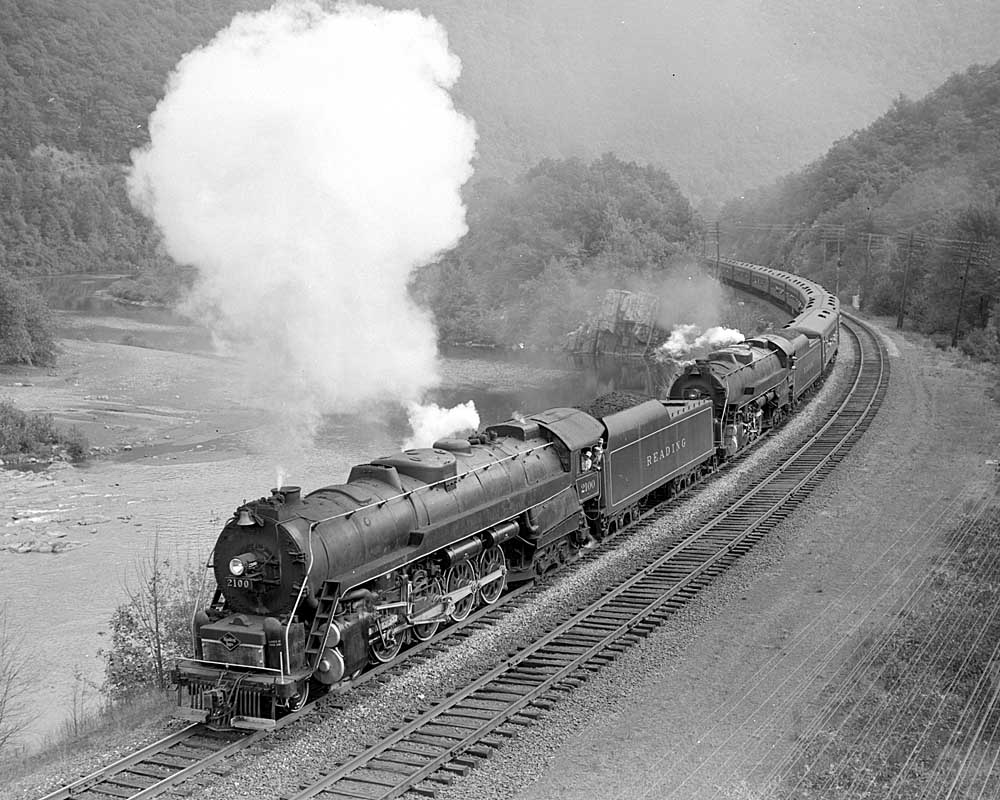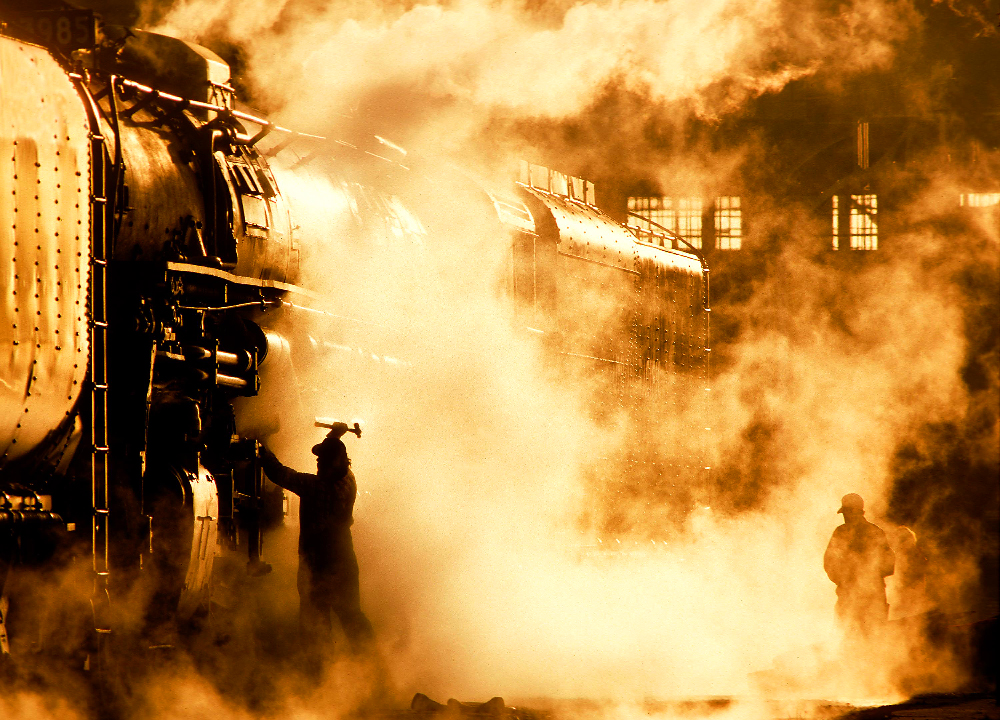Many of today’s train-watchers recognize a railroad by the sound of its diesels’ horns. It’s only natural since sound is a strong memory-jogging sense, second only to smell.
With the romance out of the way, let’s look at what makes diesel horns sound different.
Overture: how they work, where they’re placed
Air horns make sound using a vibrating diaphragm and a lot of air. What makes an air horn sound different is the number of diaphragms, the bells (chimes) to which they’re connected, and where they’re located.
The key air horn identifier is its number of chimes. A horn can have as few as one or as many as five on a single base or manifold. By varying the number and length of chimes, air horn manufacturers can change the chords the horns play.
Placement of the chimes is another determining factor for a horn’s sound. Take two horns with the same number and length of chimes. Set up one with all of the chimes facing forward, and on the other turn two chimes to face the rear. Even though they’re identical horns, the sound will be vastly different.
Other than making the horn sound different, chimes are turned around for safety reasons. Most locomotives make occasional trips backwards, so rearward-facing chimes are a necessity. Until radios became standard, rear-facing horns also helped train crews hear horn signals from the front of the train. Some railroads even have a separate single-chime horn mounted on the rear of the locomotive for safety and signaling reasons.
Multiple-chime horns have been fashionable since the early 1960’s. Before that, single-chime “honkers” were the standard on diesels and horn-equipped steam locomotives. (Yes, some railroads equipped their streamlined and semi-streamlined steam engines with horns. If you want to see some strange looks, just watch the trackside crowd whenever restored Southern Pacific Daylight 4-8-4 No. 4449 lets loose with the horn instead of the whistle.)
Where the horns are mounted on a locomotive also has a lot to do with how they sound. The most common mounting location is on the cab roof. Railroads that operate in cold climates like to mount their horns above the radiator fans so heat will keep the horns’ bells clear of blowing snow.
While the radiator mounting solves one problem it introduces another: dirt, which gets blown into the horn bells from the fans.
Dirt is an air horn’s worst enemy. If the diaphragms or horn manifold get clogged with dirt, the affected chime will not play. Normally air used to blow the horns, clear away any external dirt that comes through the bell. However, if the air supply contains oil or water, the dirt will adhere to the diaphragm or manifold and the affected chime will sound off-key or won’t work at all.
Horns require periodic maintenance to keep their “pipes” clear. Railroads often specify the horns for new locomotives based on maintenance first and sound second. The Rock Island used a beautiful-sounding five-chime horn for its early second-generation diesels, but its deferred maintenance on the somewhat complex horns made for some strange mating calls in later years. Faced with limited resources, the Rock Island switched to an easier-to-maintain three-chime horn on subsequent orders.
Leitmotifs: the signature tones of different builders
Another factor in how an air horn sounds is the manufacturer. Different suppliers have different chords they call their own.
The first notable manufacturer of air horns for railroad purposes was the Westinghouse Air Brake Co. WABCO began producing single-note horns in the 1940’s. The single-note horns were standard equipment on many a postwar streamliner. WABCO offered multiple-chime horns, but they never sold in large quantities. WABCO horns are no longer made and now are seen only on historic locomotives.
Today there are only two big players in the locomotive horn section, the Leslie Company and the Nathan Manufacturing Co. The best way visually to tell the two apart is by their manifolds. Nathan’s is stout and solid looking, while Leslie’s is open and lacy.
Nathan started selling its multiple-chime air horn in the late 1940’s. Most fans say that a Nathan horn is the most melodic horn in railroading, and for good reason. Captain Charles Bentor, successor to John Philip Sousa as conductor of the Marine Corps band, helped Robert F. Swanson develop the five-chime horn they licensed to Nathan.
That horn became Nathan’s “M” series model. Just add a “3” or “5” after the letter to ascertain the number of chimes. The original tuning of an M5 horn was an A Major dominant 7th chord (C#, E, G, A, C#) although variations were built soon after. The M series can be spotted by its short, fat bells and open manifold. Nathan also made a “P” series horn. The P series has longer bells and a heavy, solid-looking manifold.
Nathan’s most popular modern horn is the five-chime K5LA, tuned to a B Major 6th chord: D#, F#, G#, B, D#.
Leslie got its start making single-note honkers in the late 1940’s. The Leslie was the most popular honker and was virtually standard equipment on early Electro-Motive Division E and F units. Like WABCO single-noters, Leslie honkers could be mounted on a bracket to make a multiple-bell horn that sounded something like a gaggle of geese, sans the gunplay.
Shortly after Nathan came out with multiple-chime horns, Leslie introduced its Type-S Supertyfon horn in three- and five-chime versions. The Supertyfon was an instant success because of maintenance-saving features. Nathan followed suit, but Leslie sold more horns. Locomotives with a three-chime Leslie horn sound curiously like a Cadillac horn. Leslie’s most popular three-chime horn, the S-3L, is tuned: B, D#, A.
Coda: Getting the sound out
On older engines, a pull-cord or handle attached to a spring-loaded angle cock is used to blow the horns. This feature lets a locomotive engineer express his or her individuality by varying the pressure and length of the tugs on the cord or handle. Some engineers, like great horn players, have their own distinct style.
Recently, technology and lawsuits have caught up with the old pull-cord and handle. New locomotives now use a horn “button.” Instead of easing into the chord, the push-button yields a perfect, computer-like performance. Some railroads even have buttons that play a perfect – – 0 – at grade crossings. Obviously it’s a concession to existence in a lawsuit happy society.
Now that you know the basics of horns, close your eyes and listen to the locomotives. You don’t have to see them to know who’s playing.














I found this article informative, and it makes me want to search out other articles regarding train horns, their history, and their sounds.
Thanks, Rick S.